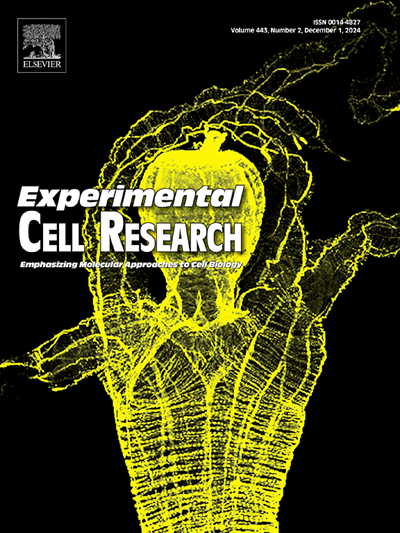探索外泌体lncRNA在癌症免疫发病机制中的作用:揭示免疫反应和EMT途径。
IF 3.3
3区 生物学
Q3 CELL BIOLOGY
引用次数: 0
摘要
外泌体是由多种细胞类型分泌的膜结合囊泡,是细胞间通讯的重要介质,并显著影响癌症的发展。外泌体促进肿瘤微环境中复杂的信号传导过程,包括免疫调节、转移、血管生成和治疗耐药性。值得注意的是,长链非编码rna (lncRNAs)是一类非编码rna,它与mRNA、DNA、蛋白质和mirna结合,通过多种机制(包括转录、转录后、翻译和表观遗传途径)调节基因表达。外泌体lncrna的定量动态显示出与癌症进展和转移相关的一致变化,表明它们作为癌症诊断和预后的生物标志物的潜在效用。此外,外泌体lncrna可以对患者的治疗反应产生关键的见解。外泌体lncrna作为各种癌症亚型的指标的鉴定不仅使它们成为预后工具,而且是有希望的治疗靶点。尽管它们具有潜力,但外泌体lncrna在癌症生物学领域的确切功能仍然没有得到充分的了解。本文深入研究了外泌体lncrna的多方面作用,特别是在乳腺癌的背景下,强调了它们在治疗应用方面的前景。彻底了解外泌体lncrna对于提高我们对乳腺癌潜在机制的认识至关重要,最终为开发更有效的治疗策略铺平道路。本文章由计算机程序翻译,如有差异,请以英文原文为准。
Exploring the role of exosomal lncRNA in cancer immunopathogenesis: Unraveling the immune response and EMT pathways
Exosomes are membrane-bound vesicles secreted by diverse cell types, serving as crucial mediators in intercellular communication and significantly influencing cancer development. Exosomes facilitate complex signaling processes in the tumor microenvironment for immunomodulation, metastasis, angiogenesis, and treatment resistance. Notably, long non-coding RNAs (lncRNAs), a class of non-coding RNAs, engage with mRNA, DNA, proteins, and miRNAs to modulate gene expression through multiple mechanisms, including transcriptional, post-transcriptional, translational, and epigenetic pathways. The quantitative dynamics of exosomal lncRNAs show a consistent variation correlating with cancer progression and metastasis, suggesting their potential utility as biomarkers for cancer diagnosis and prognosis. Additionally, exosomal lncRNAs can yield critical insights into therapeutic responses in patients. The identification of exosomal lncRNAs as indicators for various cancer subtypes presents them not only as prognostic tools but also as promising therapeutic targets. Despite their potential, the precise functions of exosomal lncRNAs in the cancer biology landscape remain inadequately understood. This paper delves into the multifaceted roles of exosomal lncRNAs, particularly in the context of breast cancer, highlighting their promise for therapeutic applications. A thorough comprehension of exosomal lncRNAs is imperative for advancing our knowledge of the underlying mechanisms of breast cancer, ultimately paving the way for the development of more effective treatment strategies for patients.
求助全文
通过发布文献求助,成功后即可免费获取论文全文。
去求助
来源期刊

Experimental cell research
医学-细胞生物学
CiteScore
7.20
自引率
0.00%
发文量
295
审稿时长
30 days
期刊介绍:
Our scope includes but is not limited to areas such as: Chromosome biology; Chromatin and epigenetics; DNA repair; Gene regulation; Nuclear import-export; RNA processing; Non-coding RNAs; Organelle biology; The cytoskeleton; Intracellular trafficking; Cell-cell and cell-matrix interactions; Cell motility and migration; Cell proliferation; Cellular differentiation; Signal transduction; Programmed cell death.
 求助内容:
求助内容: 应助结果提醒方式:
应助结果提醒方式:


